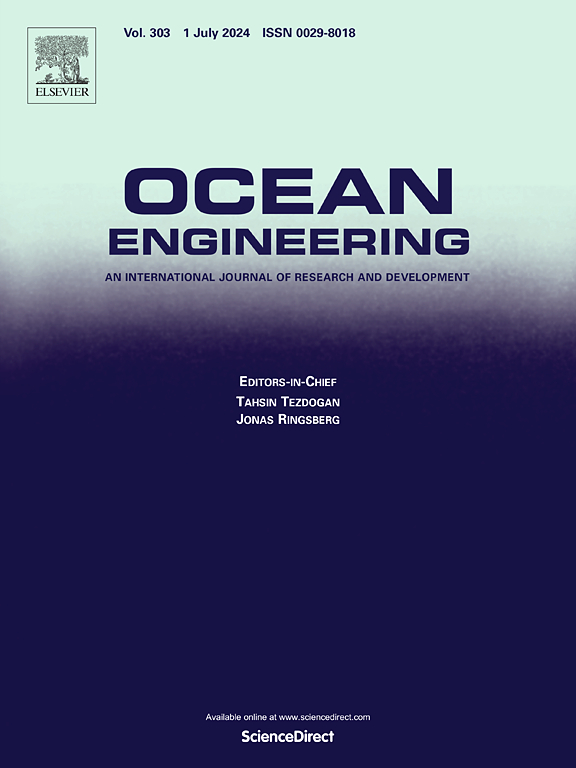Large-scale wave basin experimental study on the spatio-temporal distribution of wave impact loads on a semi-submersible platform
IF 4.6
2区 工程技术
Q1 ENGINEERING, CIVIL
引用次数: 0
Abstract
In recent decades, wave impact has been a highly concerning issue due to its extremely destructive potential in rough sea states. Accurate predictions of local impact loads are critical for the safety and reliability of coastal and offshore structures. However, our understanding of this problem is hindered by strong nonlinearity and violent nature of wave impacts. Large-scale experiments with dense instrumentation were conducted in a 50 m by 40 m by 10 m deepwater offshore basin to investigate the characteristics of wave impact pressure and impulse on a semi-submersible platform, consisting of a deck box, columns, and pontoons, under irregular waves. The temporal and spatial variations of wave impact pressures and pressure impulses are quantified and compared under various irregular waves. The results show that the time series of impact pressure exhibits a quasi-exponential growth and decay around the peak. For the 100-year sea state, the column experiences more severe wave impacts, with the averaged peak impact pressure reaching up to 124.6 kPa and the averaged pressure impulse up to 35.2 kPas, significantly greater than those on the deck box. The increase in significant wave height and spectral peak period not only increases the magnitude of local impact loads, but also the elevation and extent of the impact region. The impact loads induced by irregular waves show greater vertical variations than horizontal variations, with the maximum Coefficient of Variation (COV) exceeding 1, and exhibit similar propagation characteristics to those by regular waves on the fixed structure. The wavelet analysis of impact pressure reveals that the frequency of oscillating pressure varies depending on the volume and state of the entrained air during wave breaking, with distinctive features of aeration impacts. The motion of the platform changes the location, extent, and angle of the wave impinging the structure, consequently affecting the local impact pressure, total impact duration, and resulting impulse. The proposed method is expected to be a powerful tool for experimentally evaluating the spatio-temporal distribution of wave impact loads on offshore structures. The outcome of this study provide guidance for the design of reliable semi-submersible platforms under extreme sea conditions.
求助全文
约1分钟内获得全文
求助全文
来源期刊

Ocean Engineering
工程技术-工程:大洋
CiteScore
7.30
自引率
34.00%
发文量
2379
审稿时长
8.1 months
期刊介绍:
Ocean Engineering provides a medium for the publication of original research and development work in the field of ocean engineering. Ocean Engineering seeks papers in the following topics.
 求助内容:
求助内容: 应助结果提醒方式:
应助结果提醒方式:


